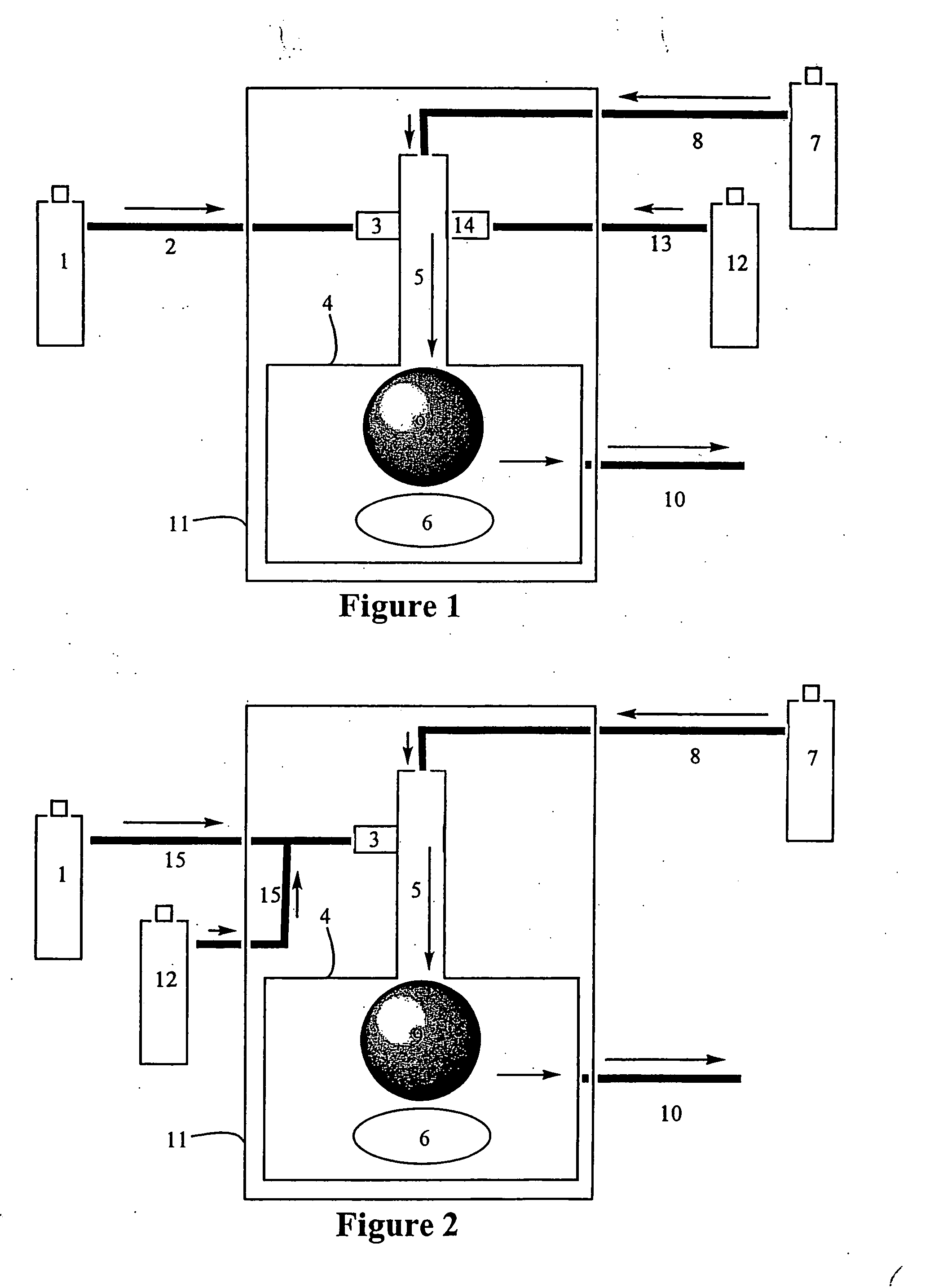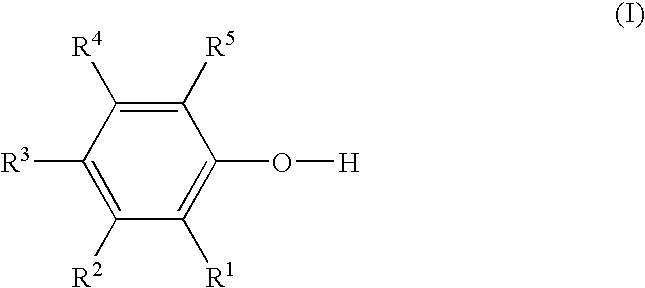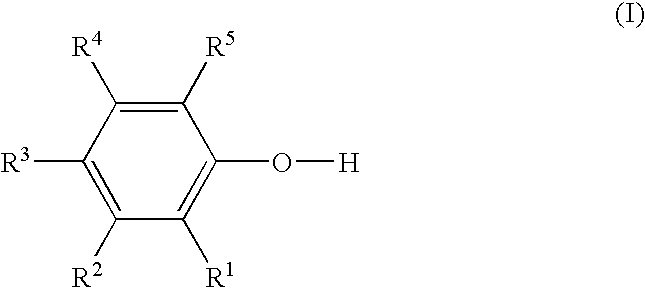Additives to prevent degradation of cyclic alkene derivatives
a technology of additives and derivatives, applied in the field of cyclic alkene compositions, can solve the problems of affecting the service life of deposition tools
- Summary
- Abstract
- Description
- Claims
- Application Information
AI Technical Summary
Benefits of technology
Problems solved by technology
Method used
Image
Examples
examples
[0082] A series of tests were devised to compare the decomposition of pure NBDE under various conditions against NBDE which has been stabilized with an additive. In these tests, glass ampoules were filled with approximately 50 mL of stabilized or unstabilized NBDE, leaving approximately 15 mL of headspace. The samples were prepared in a nitrogen-purged glovebox to prevent exposure to adventitious gases before the experiment. The headspace of each container was then purged three times with room air over the course of 5 seconds prior to the container being sealed at ambient pressure.
[0083] Samples were then exposed to temperatures of 60 or 80° C. for a period of 24 hours to simulate accelerated decomposition conditions. After the experiment was complete, the volatiles in each ampoule were removed in vacuo at room temperature, and the non-volatile decomposition products remaind behind. The extent of decomposition, or residue formation, was determined by comparing the mass of the conta...
example 6
[0087] The precursor, NBDE, stabilized with 50 ppm of MHQ is transferred, with the aid of helium pressure, from a stainless steel container through a chemical delivery line to a heated vaporizer at a flow rate of 1 mL / min. The precursor is vaporized into a chemical vapor process line that is heated to 80° C. and transported to a substrate using 500 sccm of carbon dioxide as a transport gas with the system base pressure held at 6 torr. During transport to the substrate, the precursor vapor and transport gas is mixed with a flow of methyldiethoxysilane (M-DEOS) in a proportion of approximately 60% M-DEOS and 40% NBDE. This gas mixture is exposed to a plasma power of 250 W. The substrate is heated to 150° C. with a substrate bias of −15 VDC. A carbon doped silicon oxide film is deposited on the substrate using these conditions.
example 7
[0088] The precursor, NBDE, stabilized with 50 ppm of MHQ is transferred, with the aid of helium pressure, from a stainless steel container through a chemical delivery line to a heated vaporizer at a flow rate of 1 mL / min. The precursor is vaporized into a chemical vapor process line that is heated to 80° C. and transported to a substrate using 500 sccm of carbon dioxide as a transport gas with the system base pressure held at 6 torr. During transport to the substrate, the precursor vapor and transport gas is mixed with a flow of TMCTS in a proportion of approximately 60% TMCTS and 40% NBDE. This gas mixture is exposed to a plasma power of 250 W. The substrate is heated to 150° C. with a substrate bias of −15 VDC. A carbon doped silicon oxide film is deposited on the substrate using these conditions.
PUM
| Property | Measurement | Unit |
|---|---|---|
| boiling point | aaaaa | aaaaa |
| dielectric constants | aaaaa | aaaaa |
| dielectric constant | aaaaa | aaaaa |
Abstract
Description
Claims
Application Information
 Login to View More
Login to View More - R&D
- Intellectual Property
- Life Sciences
- Materials
- Tech Scout
- Unparalleled Data Quality
- Higher Quality Content
- 60% Fewer Hallucinations
Browse by: Latest US Patents, China's latest patents, Technical Efficacy Thesaurus, Application Domain, Technology Topic, Popular Technical Reports.
© 2025 PatSnap. All rights reserved.Legal|Privacy policy|Modern Slavery Act Transparency Statement|Sitemap|About US| Contact US: help@patsnap.com



